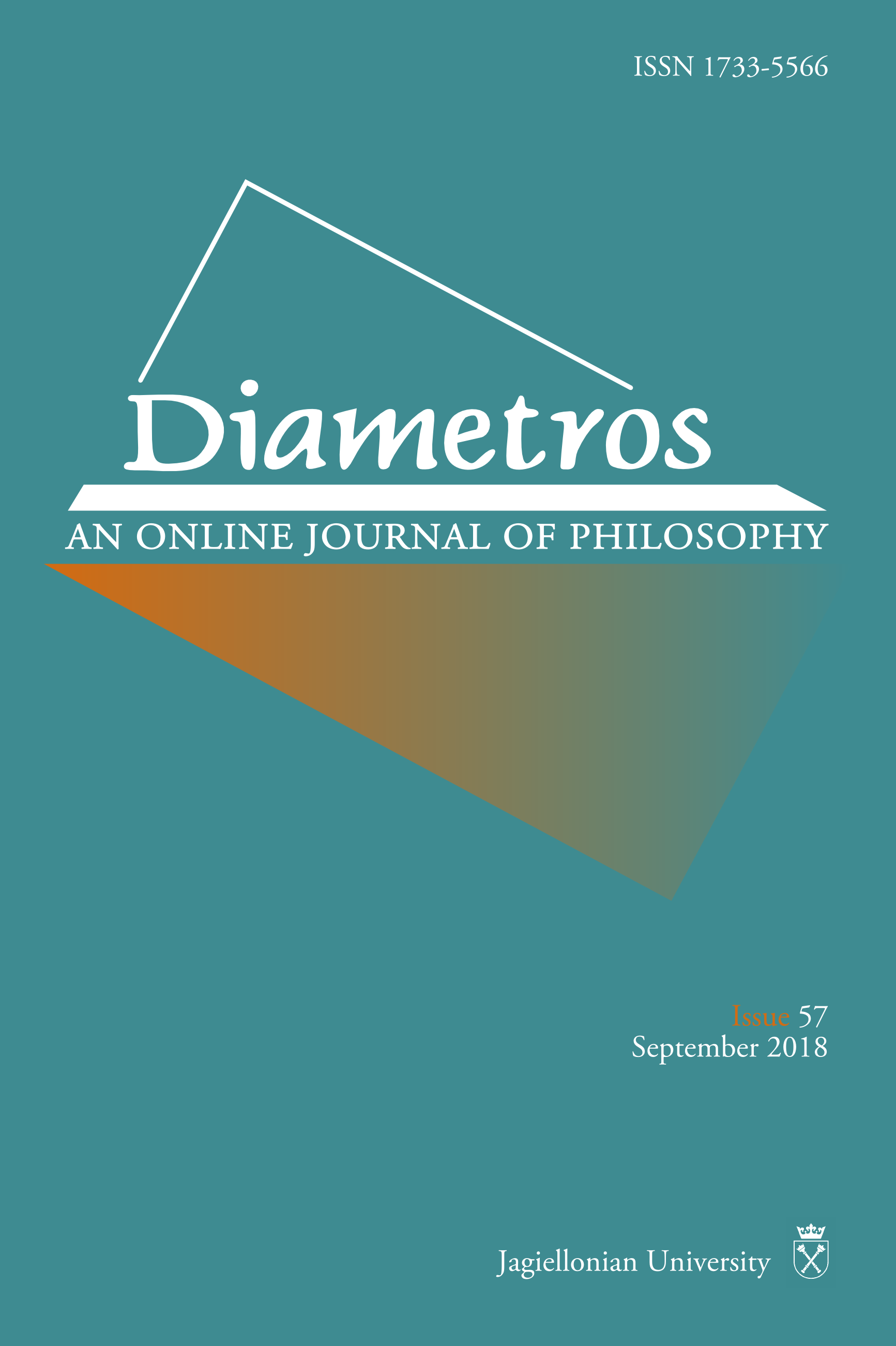Making Diagnostic Strategies in Medical Practice with the Use of Bayes’ Theorem (in Polish)
Main Article Content
Abstract
The paper will compare two methods used in the design of diagnostic strategies. The first one is a method that precises predictive value of diagnostic tests. The second one is based on the use of Bayes’ theorem. The main aim of this article is to identify the epistemological assumptions underlying both of these methods. For the purpose of this objective, example projects of one and multi-stage diagnostic strategy developed using both methods will be considered.
Article Details
By submitting his/her work to the Editorial Board, the author accepts, upon having his/her text recommended for publication, that Diametros applies the Attribution 4.0 International (CC BY 4.0) license to the works we publish. Under this license, authors agree to make articles legally available for reuse, without permission or fees. Anyone may read, download, copy, print, distribute or reuse these articles without asking prior permission from the publisher or the author, as long as the author and original source are properly cited. The author holds the copyright without any other restrictions. Full information about CC-BY: https://creativecommons.org/licenses/by/4.0/legalcode.
How to Cite
References
Ajdukiewicz K. (1975), Logika pragmatyczna, PWN, Warszawa.
Caraguel C.B.G., Vanderstichel R. (2013), The two step Fagan’s nomogram: ad hoc interpretation of a diagnostic test result without calculation, „Evidence Based Medicine” 18 (4): 125–128.
Diamond G.A., Forrester J.S. (1979), Analysis of probability as an aid in the clinical diagnosis of coronary artery disease, „New England Journal of Medicine” 300 (24): 1350–1358.
Dujardin B., van den Ende J., van Gompel A., Unger J.P., van der Stuyft P (1994), Likelihood ratios: a real improvement for clinical decision making, „European Journal of Epidemiology” 10 (1): 29–36.
Enøe C., Georgiadis M.P., Johnson W.O. (2000), Estimation of sensitivity and specificity of diagnostic tests and disease prevalance when the true disease state is unknown, „Preventive Veterinary Medicine” 45 (1–2): 61–81.
Fagan T.J. (1975), Nomogram for Bayes's theorem, „New England Journal of Medicine” 293 (5): 257.
Fine T. (1973), Theories of Probability. An Examination of Foundation, Waltham.
Gigerenzer G., Hoffrage U. (1995), How to Improve Bayesian Reasonig Without Instruction: Frequency Formats, „Psychological Review” 102 (4): 684–704.
Gillies D. (2000), Philosophical Theories of Probability, Routledge, London.
Goodman S.N. (1999), Toward Evidence-Based Medical Statistics. 1: The P-Value Fallacy, „Annals of Internal Medicine” 130 (12): 995–1004.
Halkin A., Reichman J., Schwaber M., Paltiel O., Brezis M. (1998), Likelihood ratios: getting diagnostic testing into perspective, „QJM: An International Journal of Medicine” 91 (4): 247–258.
Howson C., Urbach P. (2006), Scientific Reasoning. The Bayesian Approach, Open Court Publishing Company, Chicago, La Salle.
Hui S.L., Zhou X.H. (1998), Evaluation of diagnostic tests without gold standards, „Statistical Methods in Medical Research” 7 (4): 354–370.
Jaeschke R., Cook D.J., Guyatt G.H. (1998), Evidence based medicine (EBM), czyli praktyka medyczna oparta na wiarygodnych i aktualnych publikacjach (POWAP), „Medycyna Praktyczna” 10 (92): 156–159.
Jędrychowski W. (1999), Epidemiologia. Wprowadzenie i metody badań, Wydawnictwo Lekarskie PZWL, Warszawa.
Jędrychowski W. (2002), Podstawy epidemiologii, Wydawnictwo Uniwersytetu Jagiellońskiego, Kraków.
Joseph L., Gyorkos T.W., Coupal L. (1995), Bayesian estimation of disease prevalance and the parameters of diagnostic tests in the absence of gold standard, „American Journal of Epidemiology” 141 (3): 263–272.
Moons K.G., van Es G.A., Deckers W., Habbema J.D., Grobbee D.E. (1997), Limitations of sensitivity, specificity, likelihood ratio, and bayes’ theorem in assesing diagnostic probabilities: a clinical example, „Epidemiology” 8 (1): 12–17.
Naskalski J. (2005), Pojęcie normy, wartości referencyjnych i ich znaczenie dla formułowania diagnozy, [w:] Diagnostyka laboratoryjna z elementami biochemii klinicznej, A. Dembińska-Kieć, J. Naskalski (red.), Urban i Partner, Wrocław: 47–57.
Paulo S., Mendes S., Vizinho R., Carneiro A.V. (2004), Diagnostic testing, pre- and post-test probabilities, and their use in clinical practice, „Revista Portuguesa de Cardiologia” 23 (9): 1187–1198.
Rzepiński T. (2016), Konstruowanie typologii i klasyfikacji wielowymiarowych dla potrzeb diagnostyki medycznej, „Zagadnienia Naukoznawstwa” 2 (208): 199–218.
Sak J. (2013), Wielowymiarowość postrzegania choroby w kontekście przekonań zdrowotnych i poczucia sensu życia, Perfecta Info, Lublin.
Steurer J. (2009), Pre-test and post-test probabilities. Who cares?, „Therapeutische Umschau” 66 (1): 5–7.
Winkler R.L., Smith J.E. (2004), On uncertainty in medical testing, „Medical Decision Making” 24 (6): 654–658
Wulff H.R., Gøtzsche P.C. (2005), Racjonalna diagnoza i leczenie. Wprowadzenie do medycyny wiarygodnej czyli Evidence-Based Medicine, AKTIS, Łódź.




